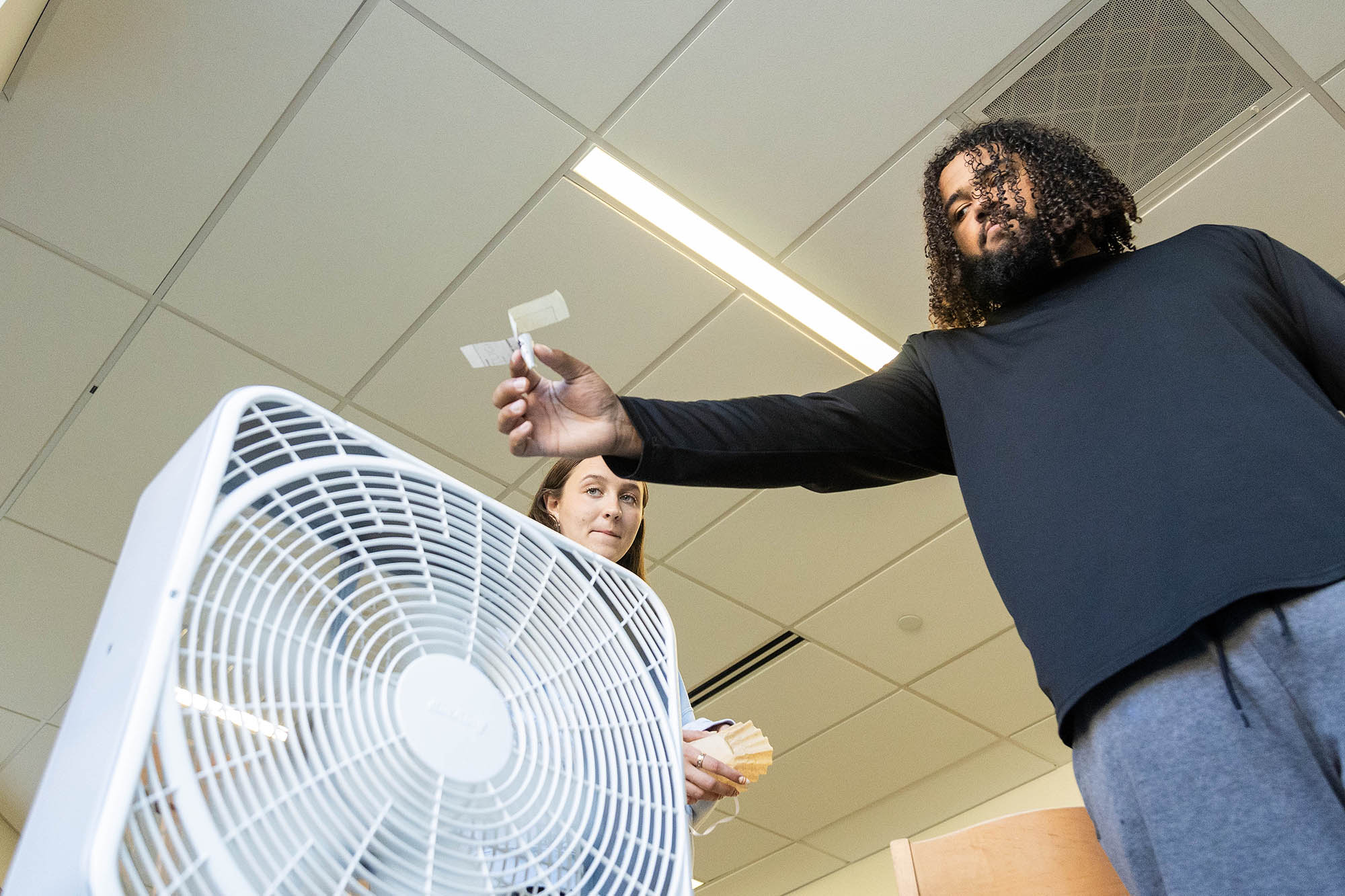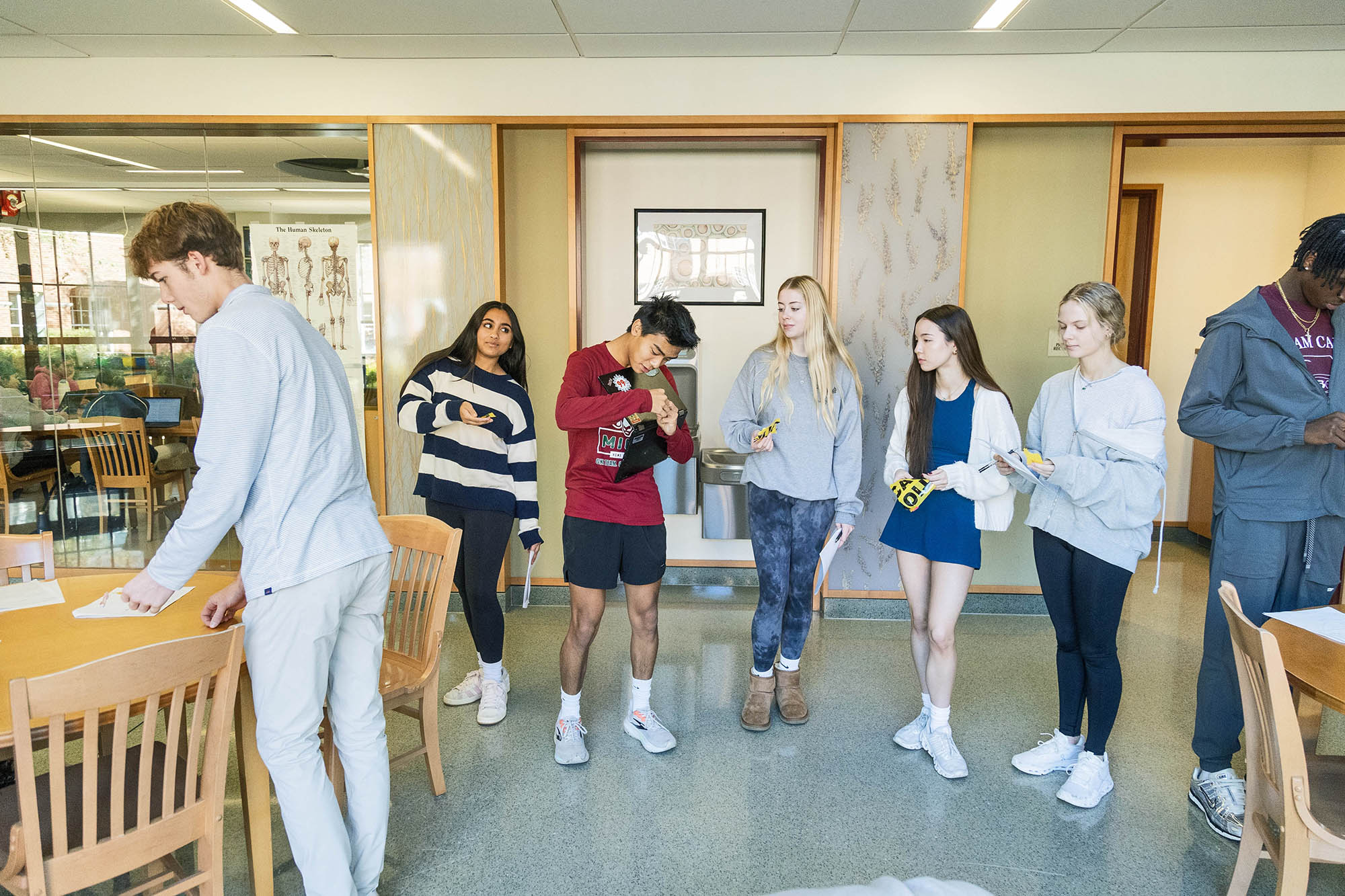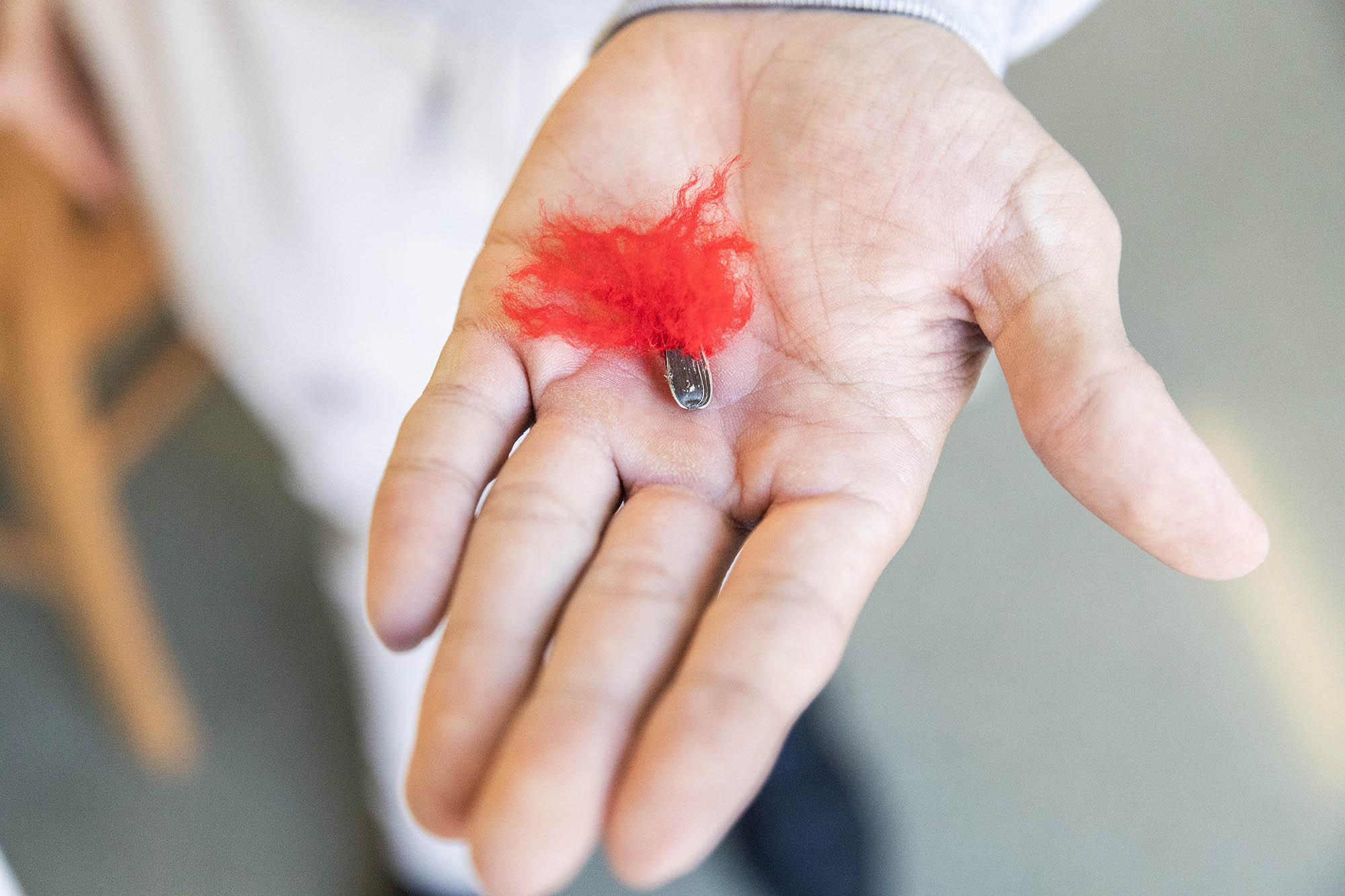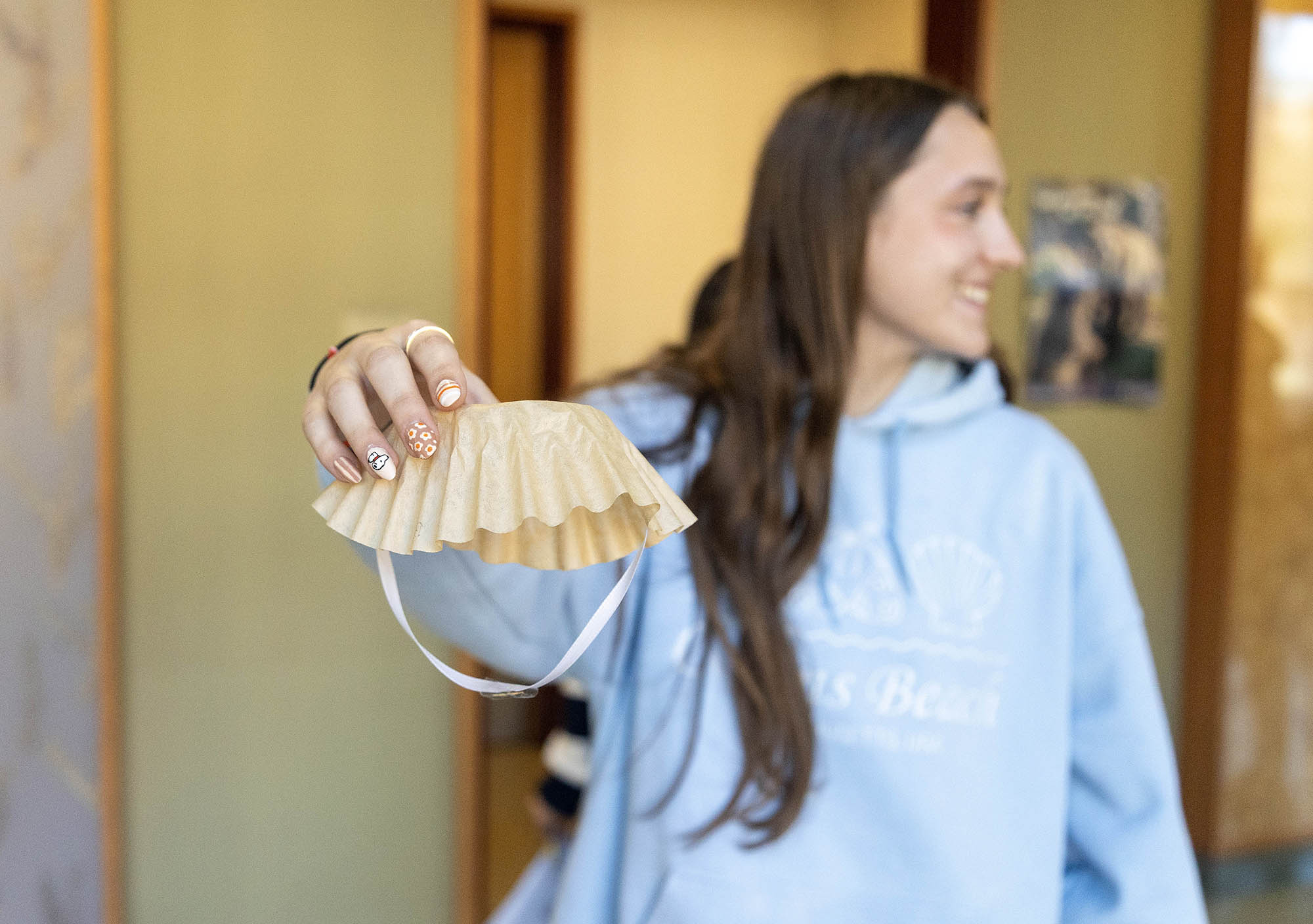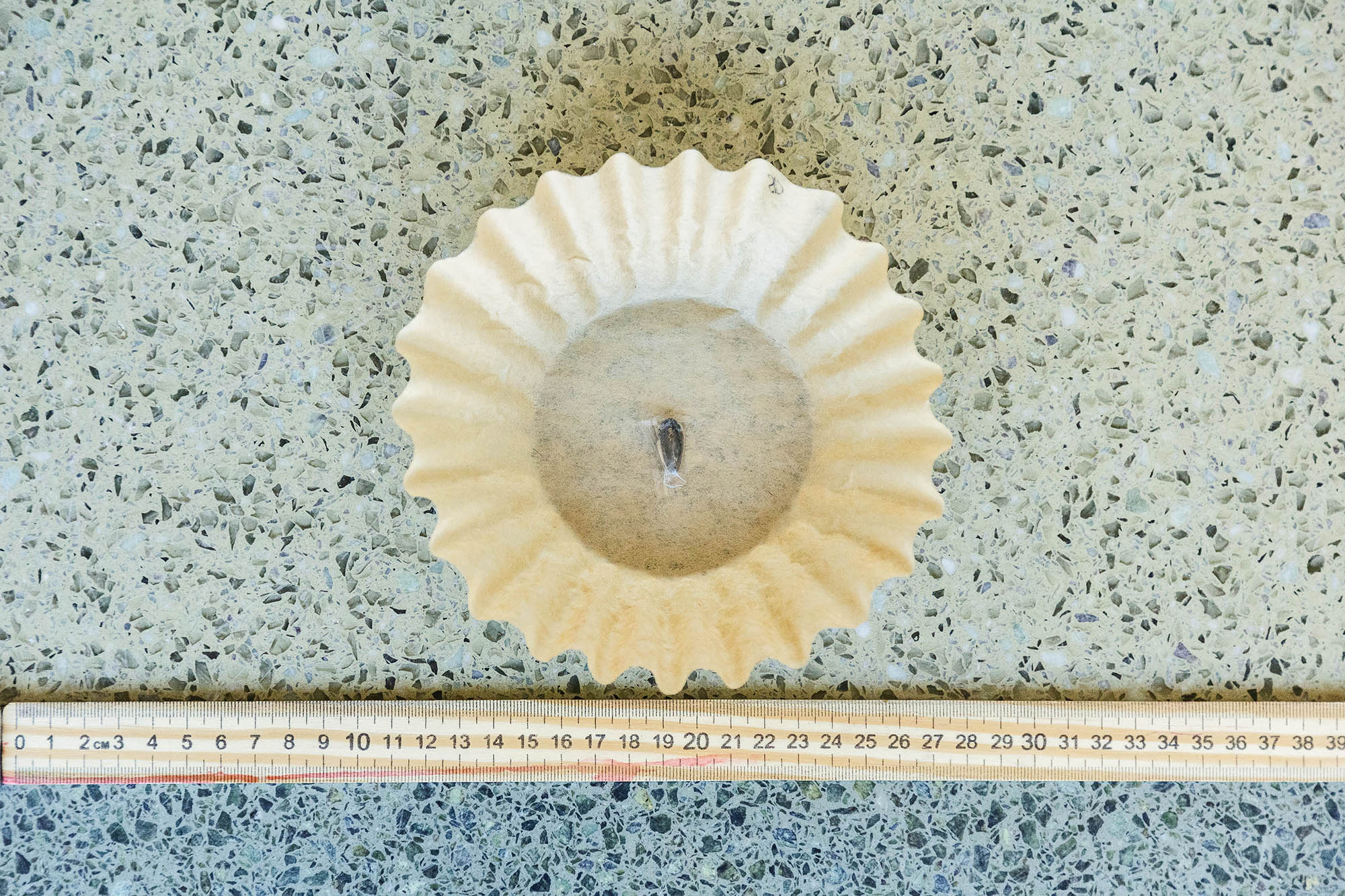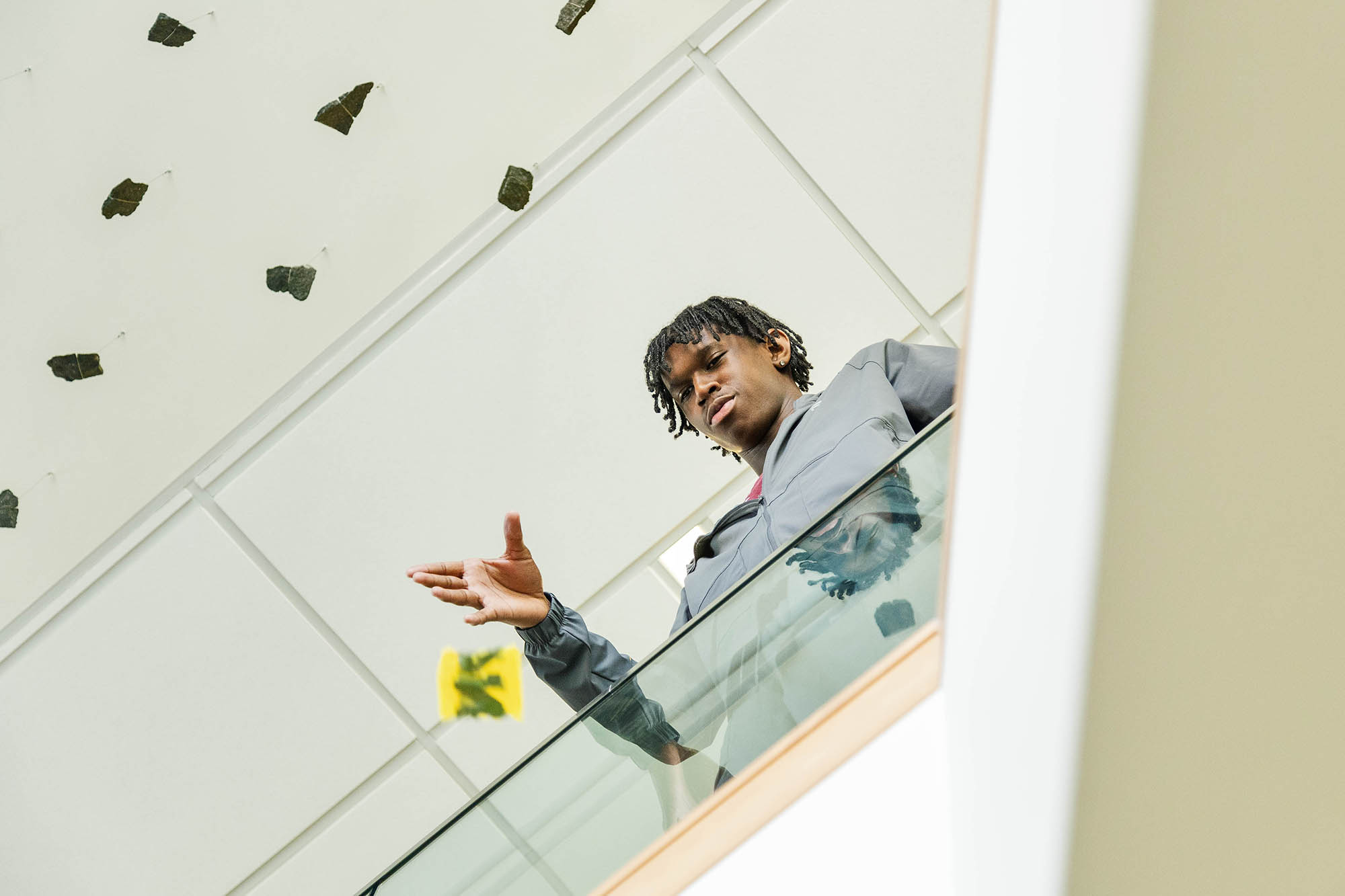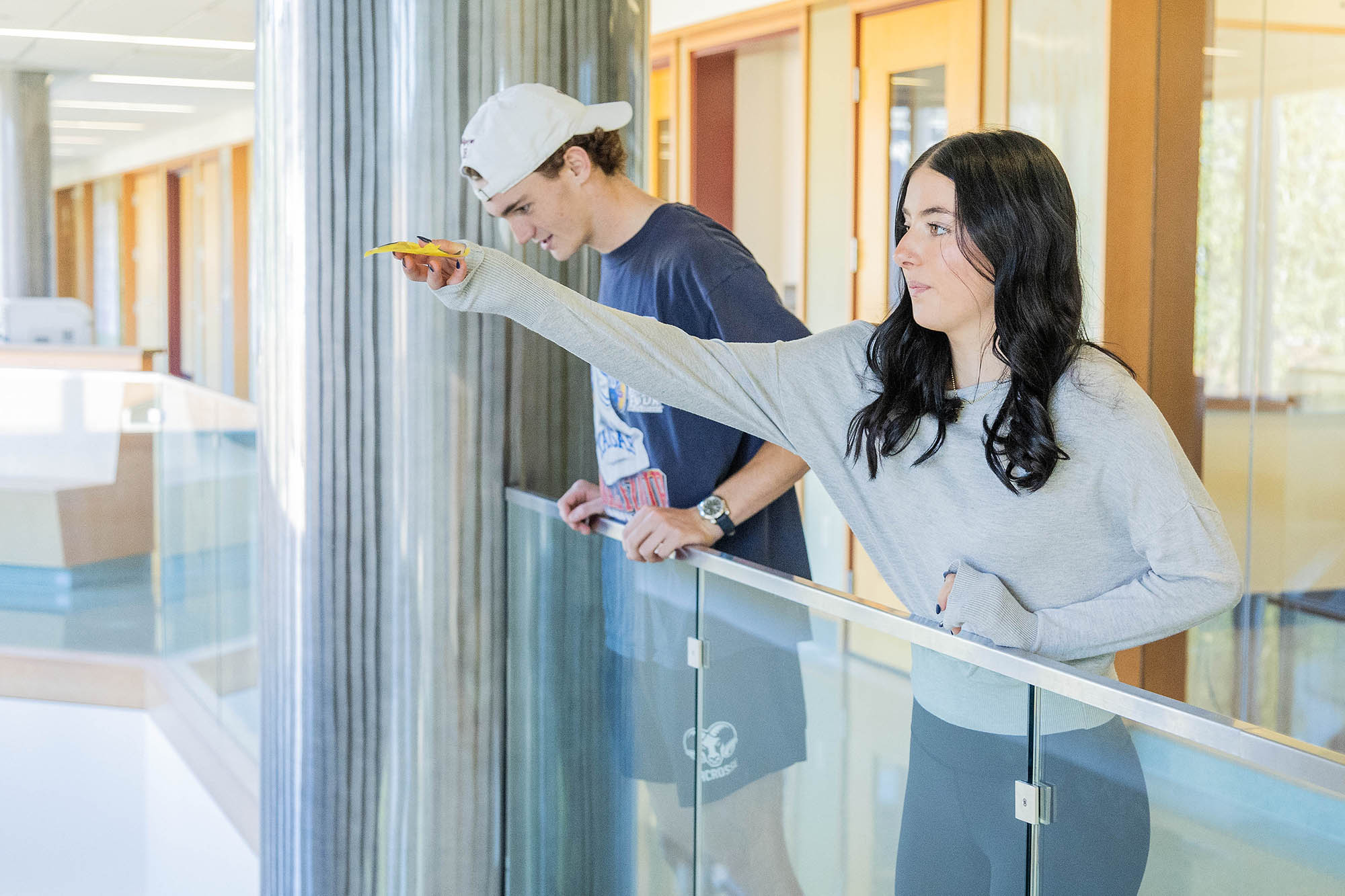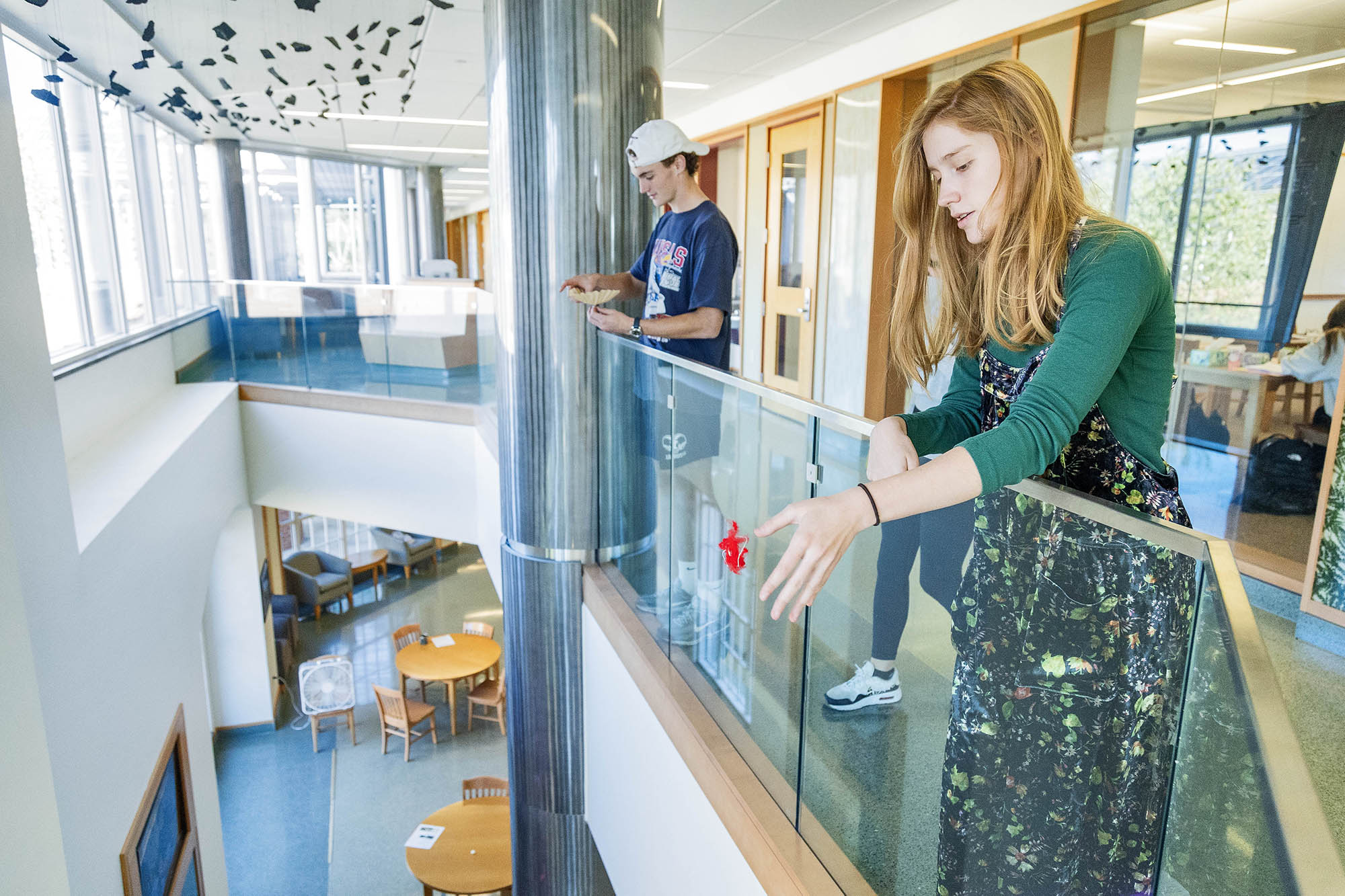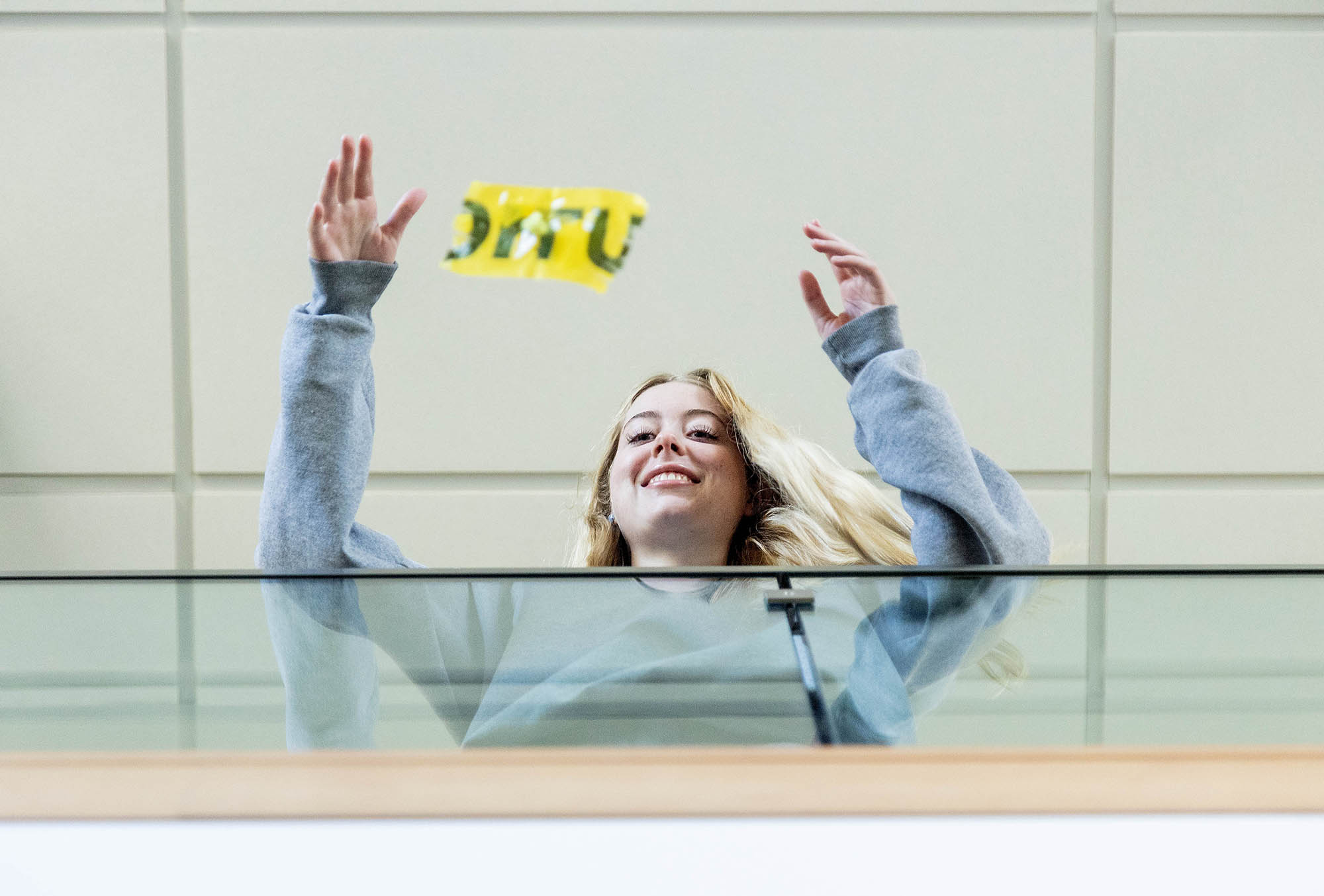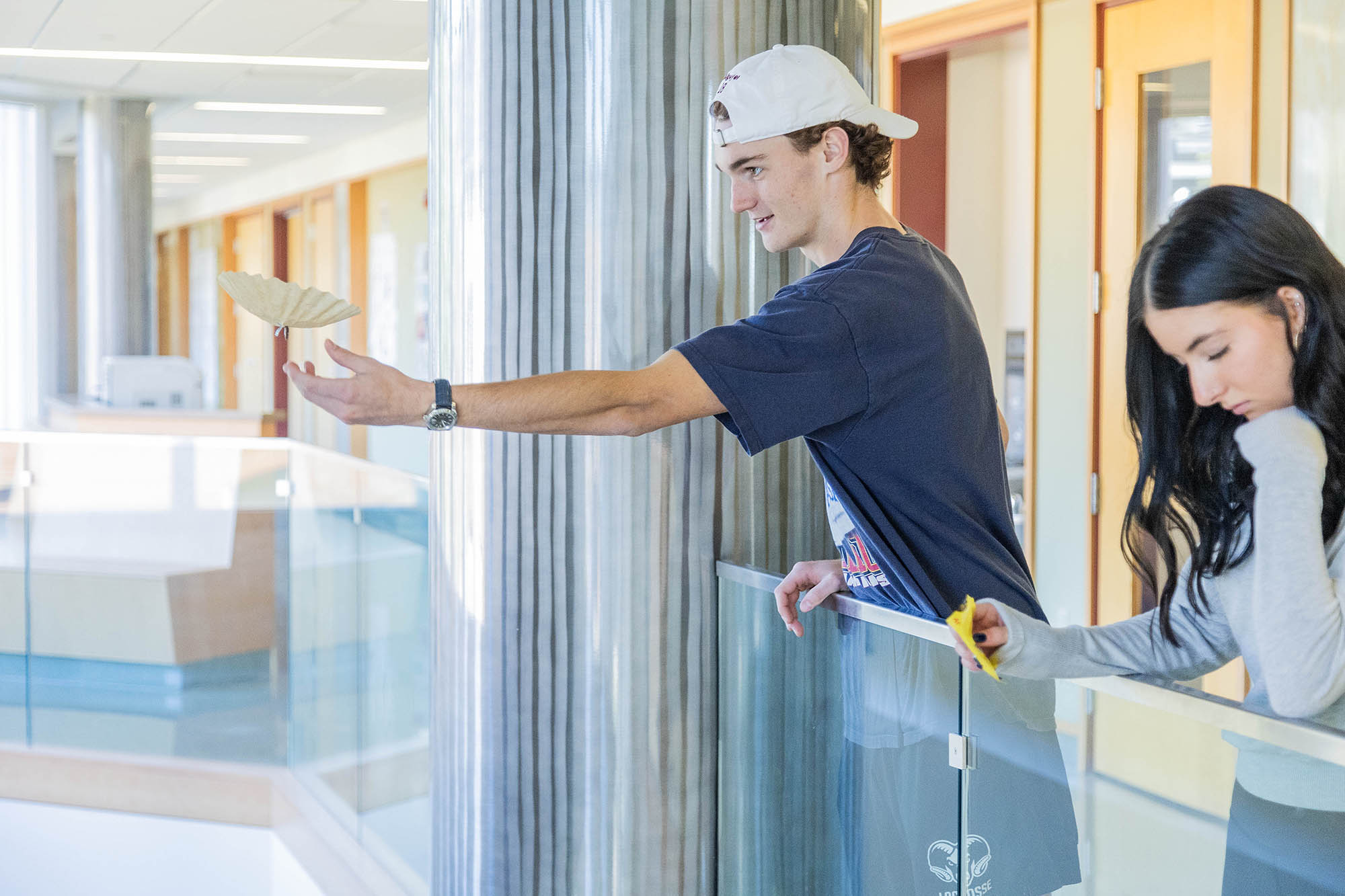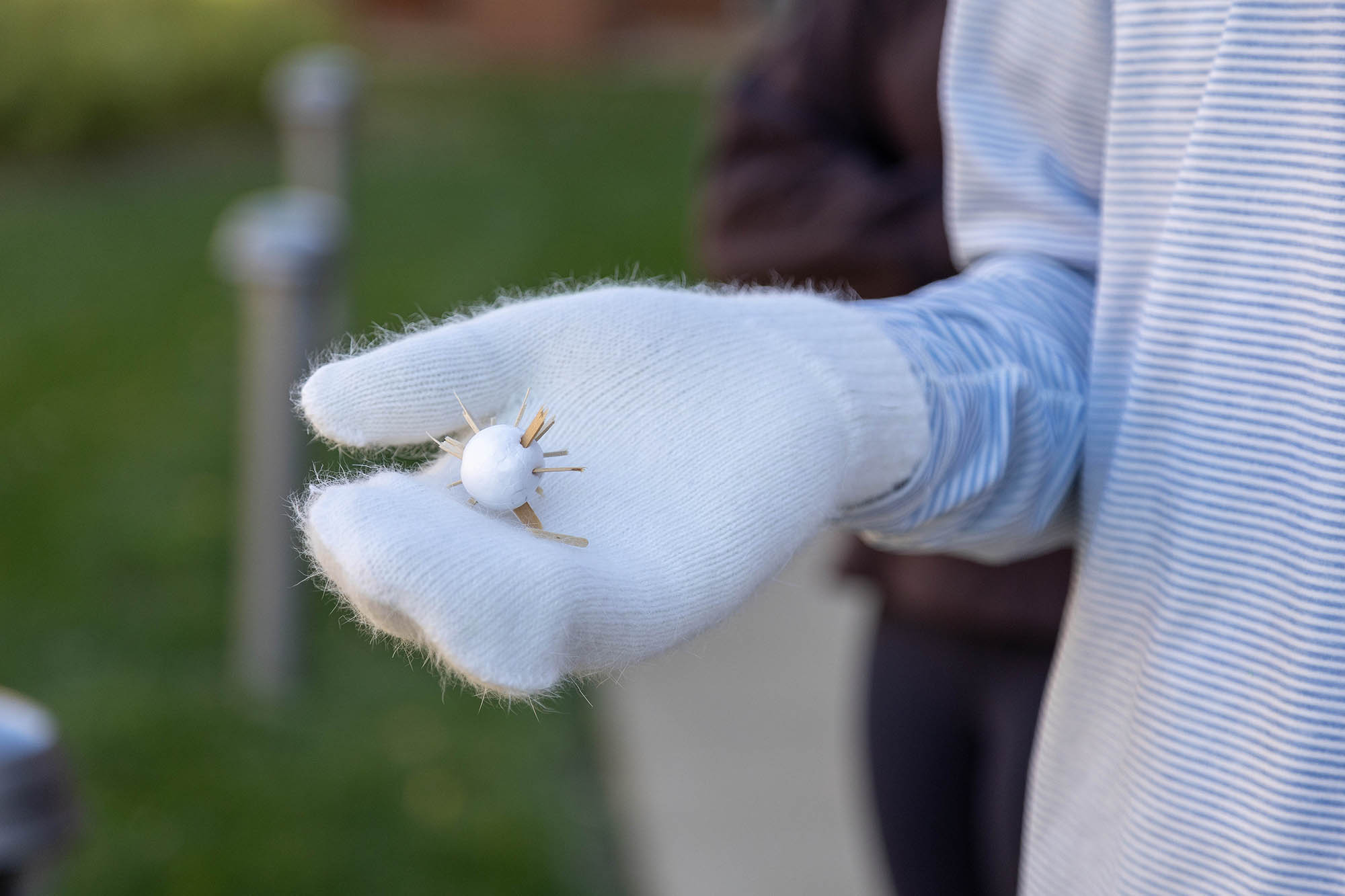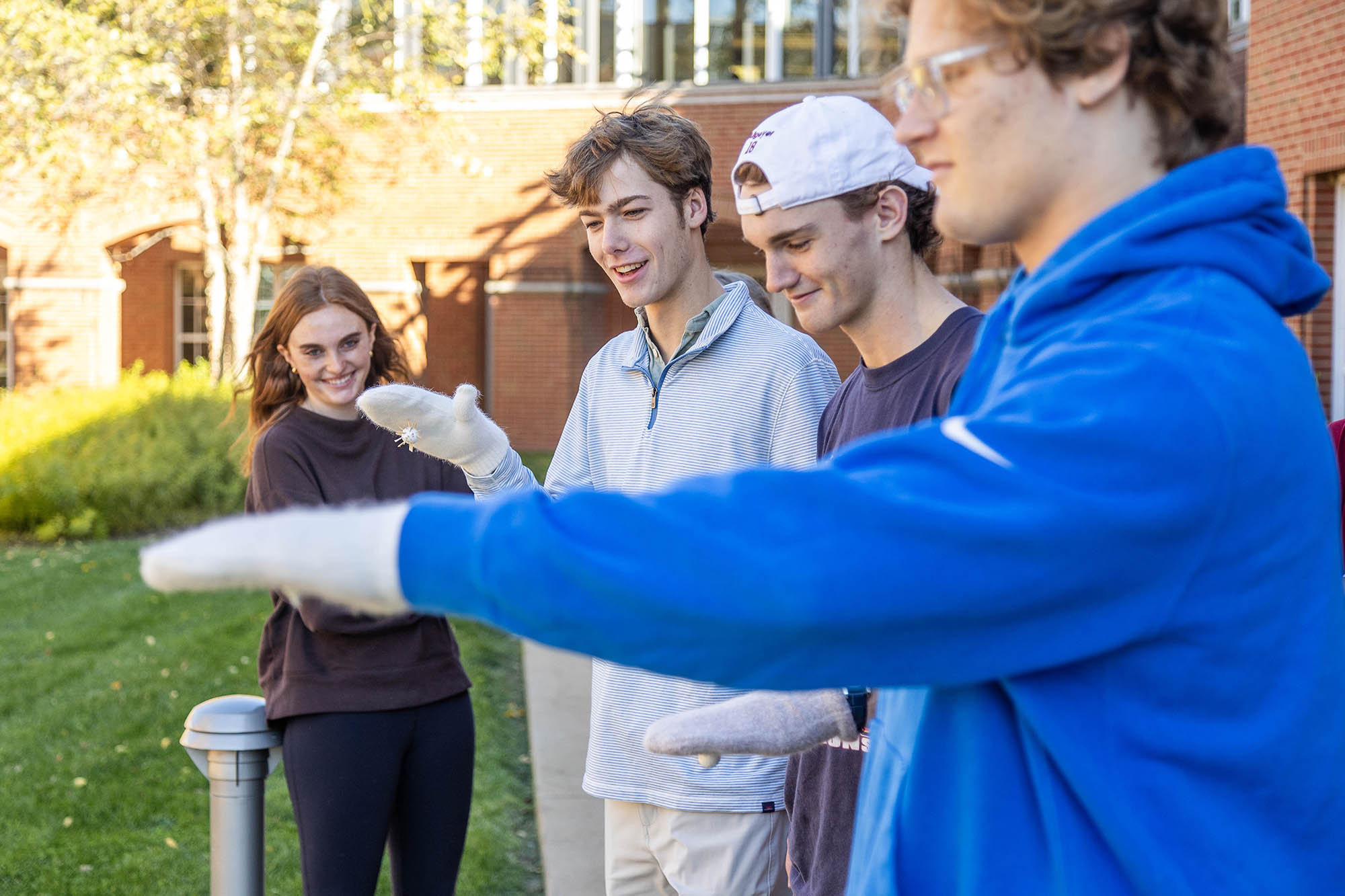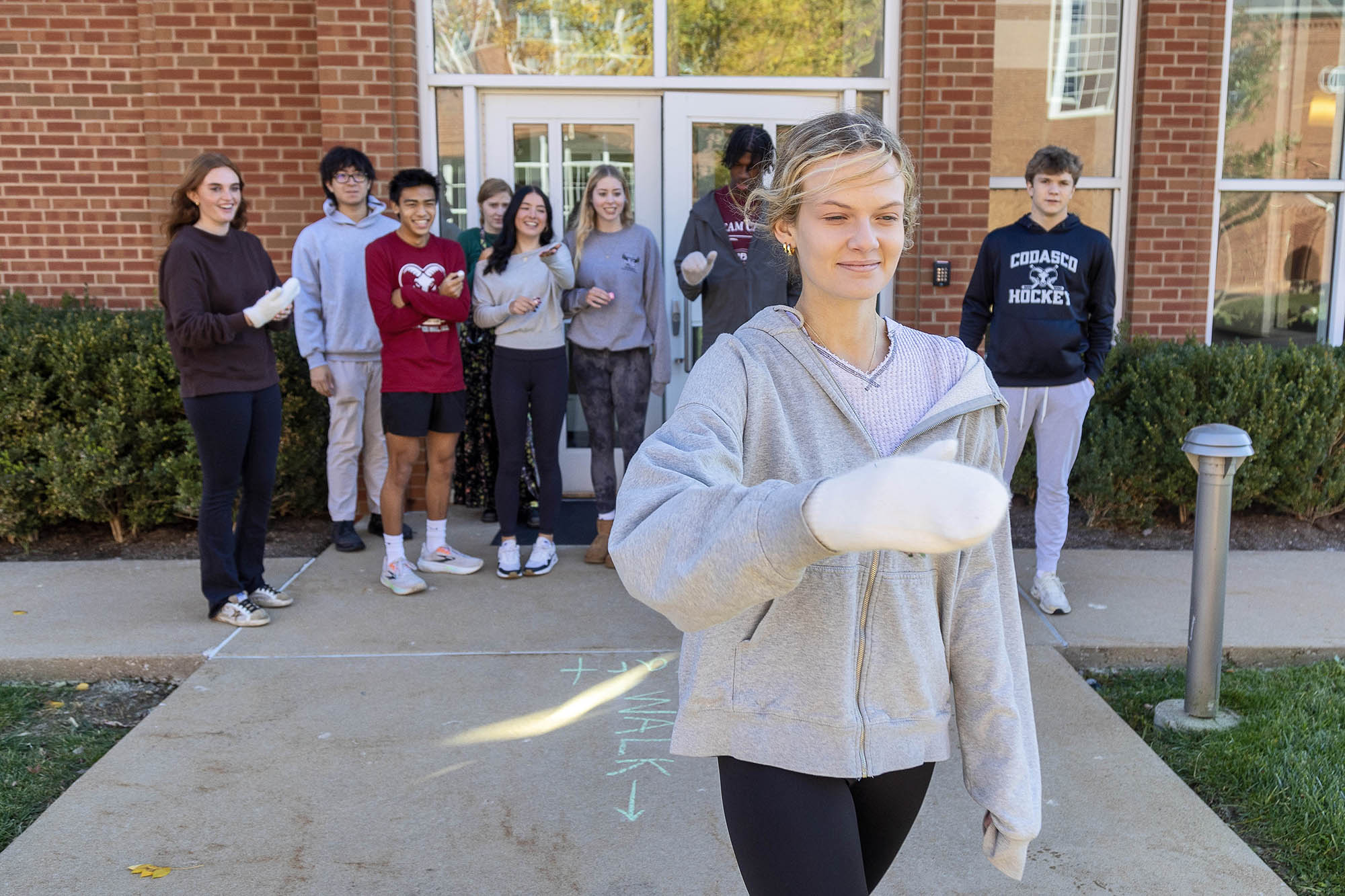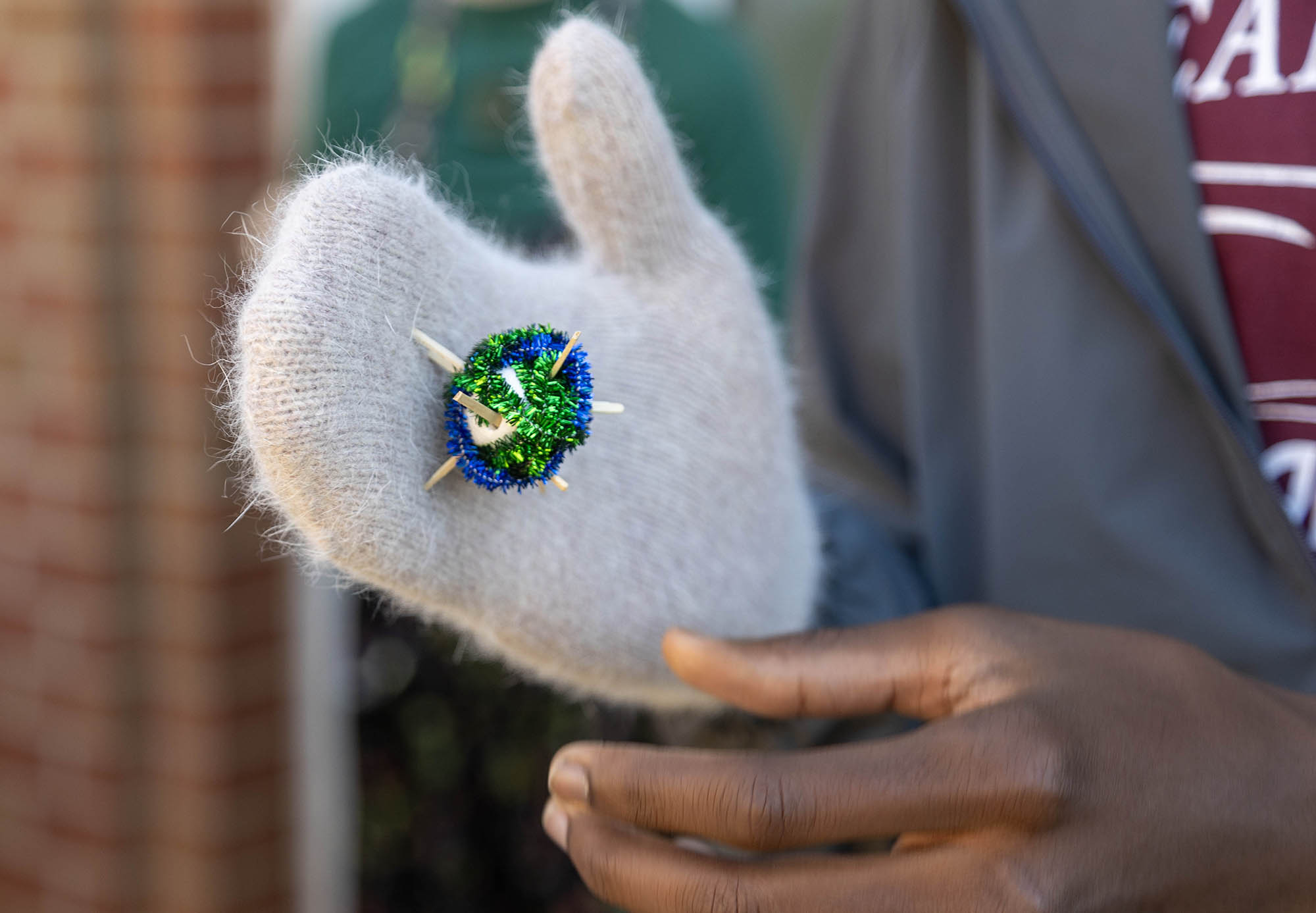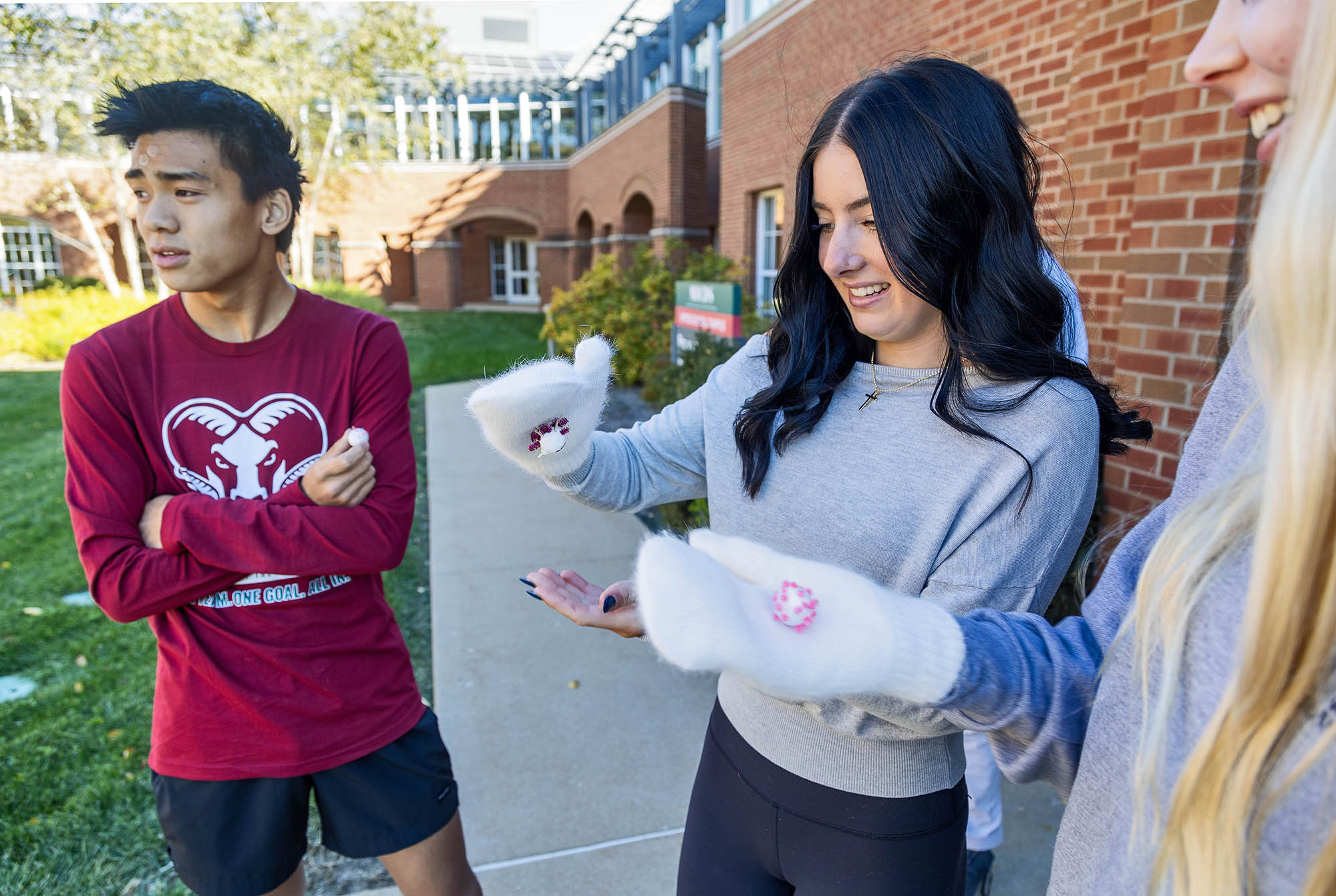Plants have had eons to learn how best to propagate. Earlier this week, MICDS Exploratory Botany students were trying to replicate the most effective ways that trees and other plants spread by designing “seeds” that they then tested in a real-world experiment set up by Laura Bradford, Upper School Science Teacher. “This was the culminating activity: to engineer seeds that follow two different types of seed dispersal,” she says. “Our challenge was to produce two different seeds, one dispersal by wind, the other dispersal by animal, by sticking to fur.”
Students were given a class period to create their own designs and make prototypes of each seed before testing their effectiveness. The wind dispersal challenge had two components: measuring how far the seeds would travel in a breeze (as tested when dropped in front of a box fan), and time spent in the air (determined by dropping the seeds from the second-floor balcony). Students recorded their data before moving on to the next test. Bradford acknowledges, “The animal dispersal seed was more fun!” Students put on a wool mitten that represented the fur of an animal. They then ran an obstacle course, waving their hands in the air and jumping up and down to see if the seed would stay attached to the mitten.
In the end, students discovered that parachutes provided the best wind dispersal, and barbed pipe cleaners best mimicked seeds that stick to animal fur.
Way to grow, Rams!

